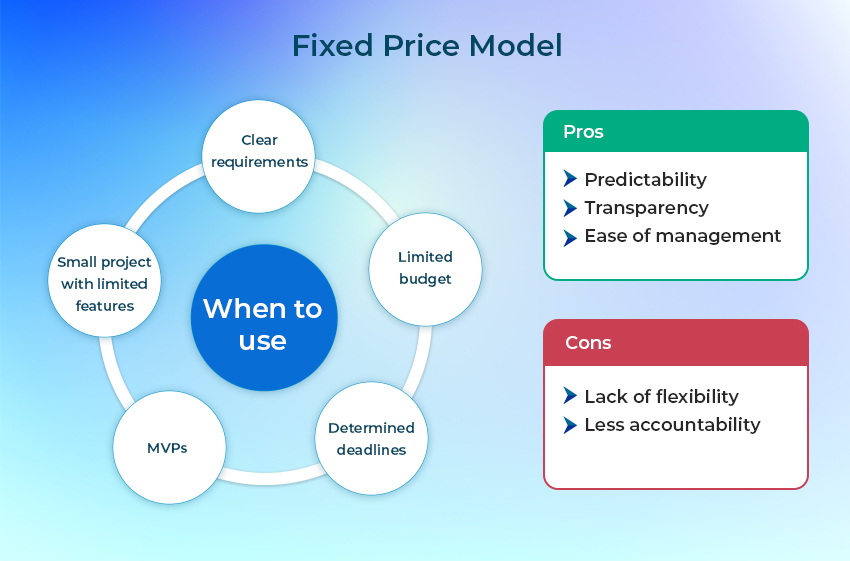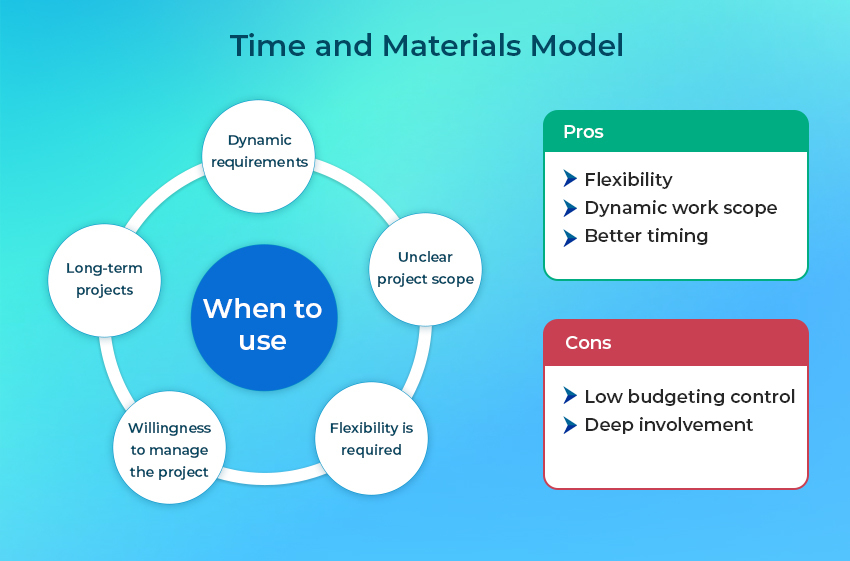
Decoding Software Development Pricing Models: Fixed Price vs. Time and Materials Contracts
Introduction:
In the realm of software development, selecting the appropriate pricing model is crucial for project success. The two most common models are fixed price and time and materials (T&M). While both have their merits, understanding the pros and cons of each is vital for making informed decisions. In this comprehensive blog, we will delve deeper into fixed price and T&M contracts, exploring their nuances, practical applications, and their suitability for different software projects.
1. Fixed Price Contracts:
1.1 Definition and Basics:
Fixed price contracts involve a single-sum agreement, where the service provider commits to completing the project within a predetermined budget. This model is best suited for projects with well-defined requirements, specifications, and predictable rates, ensuring cost stability throughout the project duration.
1.2 Advantages and Use Cases:
Fixed price contracts offer several advantages, including:
Predictability and clear budgeting:
With a fixed price, businesses can plan and allocate resources effectively, knowing the exact cost of the project.
Transparency:
Clients can have clear expectations regarding requirements, budget, and deadlines, facilitating better project management and scope compliance.
Ease of management:
Payments are typically based on the completion of predefined project milestones, simplifying financial management and minimising involvement in day-to-day project operations.
Fixed price contracts are particularly suitable for projects with the following characteristics:
- Clear and well-defined requirements and deadlines.
- Limited or fixed budget.
- Minimum Viable Products (MVPs).
- Small projects with a concise scope.
- Determined deadlines
However, there are some disadvantages to consider, such as
a) the lack of flexibility in accommodating changes and
b) the limited accountability for emergent changes initiated by the client.

2. Time and Materials Contracts:
2.1 Definition and Basics:
Time and materials (T&M) contracts are based on billing clients for the actual work performed and the hourly rates of labour. This model offers greater flexibility, allowing for adjustments in requirements, changes in scope, and user involvement throughout the development process.
2.2 Advantages and Use Cases:
Time and materials contracts provide several advantages, including:
Flexibility:
T&M contracts give companies the flexibility to adjust work volume, change materials or designs, change the focus, and alter features in response to changing project needs.
Dynamic work scope:
This model is particularly useful for larger projects where the specific path to achieve the desired outcomes may not be clear from the outset. It aligns well with agile methodologies and enables iterative development.
Better timing:
By avoiding fixed-price bidding, you may start right away and save time. Blended rates also make it possible to track the amount of time the team devotes to working on each feature, which encourages them to be more productive.
T&M contracts are well-suited for projects with the following characteristics:
- Long-term projects with evolving requirements.
- Projects with an unknown or dynamic scope.
- Flexibility to change the scope or the workload as necessary.
However, it’s essential to be aware of the potential drawbacks of T&M contracts, such as
a) limited budgeting control and
b) the need for greater client involvement to ensure project alignment.

3. Comparative Analysis and Decision-making Factors:
3.1 Cost Considerations:
Fixed Price Contracts:
Pros:
With fixed price contracts, businesses have a clear understanding of project costs from the start, making budgeting and financial planning more straightforward.
Cons:
Changes to the scope can lead to additional costs, and the fixed price may not allow for the flexibility required in projects with evolving requirements.
Time and Materials Contracts:
Pros:
T&M contracts provide flexibility in adjusting project scope, allowing for changes without significant financial impact.
Cons:
The overall cost can go beyond the initially estimated budget if not closely managed and monitored.
3.2 Project Scope and Requirements:
Fixed Price Contracts:
Pros:
Well-defined project requirements and clear expectations contribute to effective project planning and execution.
Cons:
Limited flexibility for changes or additions to the scope once the project has commenced, potentially resulting in additional costs.
Time and Materials Contracts:
Pros:
T&M contracts offer the ability to adapt to changing project requirements, allowing for dynamic adjustments and enhancements.
Cons:
Without proper management, the project scope may expand beyond the initial estimates, leading to potential cost overruns.
3.3 Risk Management:
Fixed Price Contracts:
Pros:
Fixed price contracts provide a sense of security and stability, with the service provider assuming more of the project risk.
Cons:
Limited flexibility in accommodating changes or unforeseen circumstances may increase the risk of project delays or compromises in quality.
Time and Materials Contracts:
Pros:
T&M contracts offer greater adaptability to mitigate risks and respond to changing project dynamics.
Cons:
The client bears a higher level of risk due to the potential for cost overruns and uncertainties in project scope.
Conclusion:
Selecting the appropriate pricing model for software development projects is a critical decision that can significantly impact project outcomes. By understanding the nuances of fixed price and time and materials contracts, businesses can make informed choices aligned with their project requirements, budget constraints, and desired flexibility.
While fixed price contracts provide predictability and ease of management, they may limit adaptability. Time and materials contracts, on the other hand, offer flexibility and dynamic adjustments but require more client involvement and careful budget monitoring.
Ultimately, the choice between fixed price and time and materials contracts depends on the specific project context, including the clarity of requirements, the potential for scope changes, budget considerations, and risk tolerance. Collaboration and effective communication between the client and the service provider are key to ensuring a successful software development journey.
Ready to optimise your software development project with the right pricing model? Contact Kodsmith, a leading digital transformation company, today and let us guide you towards success!